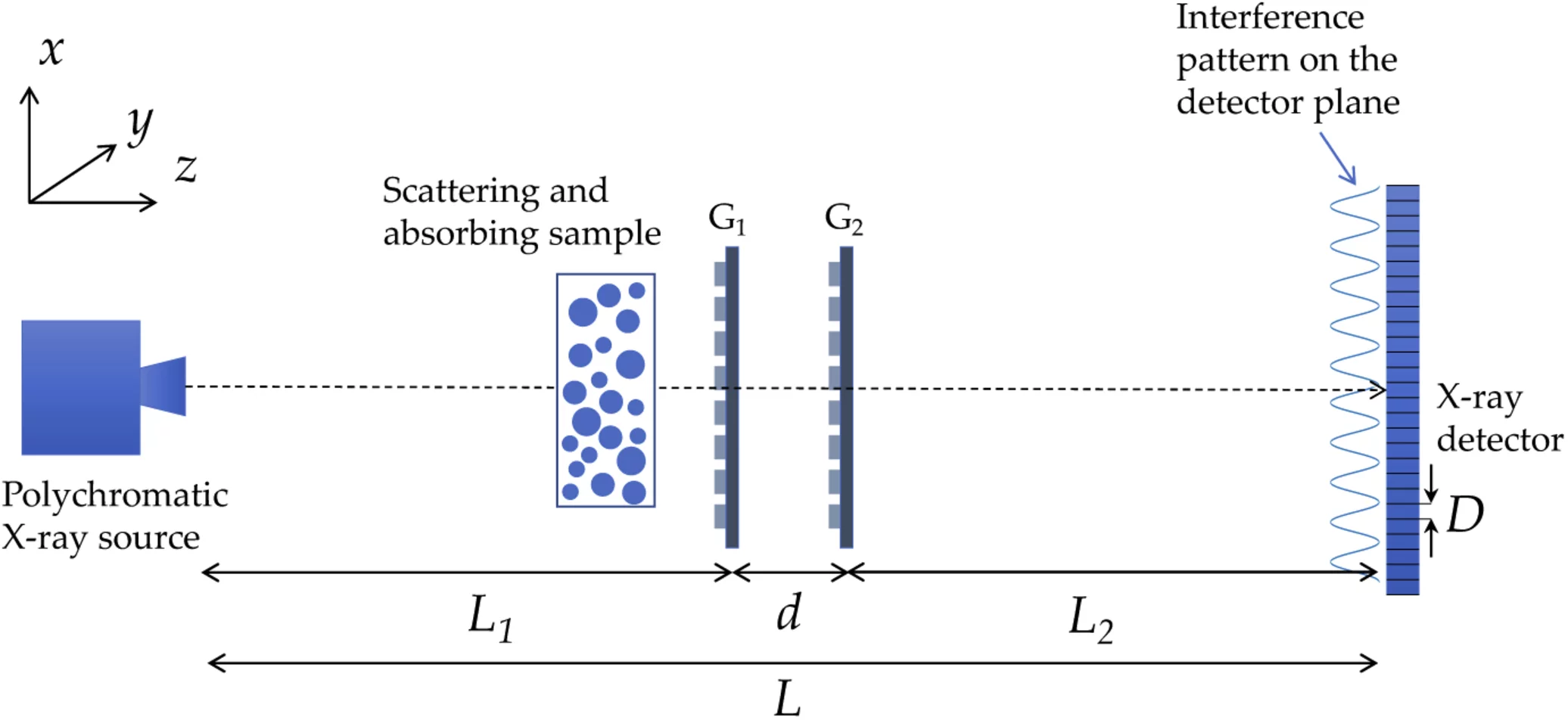X-ray grating interferometry has shown the potential for microstructural analysis over large areas by exploiting the so-called dark-field signal. Dark-field signal originates from ultra-small-angle scattering by unresolved features in the sample. A variant of conventional XGI named dual phase grating interferometry was developed by the X-ray tomography group. Based only on phase-shifting structures, straightforward micro-structural investigations have been carried out with conventional X-ray sources.
Recently, the group have expanded the theoretical understanding of such dual phase grating interferometers taking into account beam hardening and polychromatic sources. With this approach, beam hardening effects can be corrected in a dual phase interferometry. The researchers were able to also show that quantitative retrieval of underlying real space correlation function of the sample can be achieved. This comprises a significant step towards the application of the method for the quantitative investigation of the microstructure of materials and devices using dual phase grating interferometry.
Original Publication
Modeling of beam hardening effects in a dual-phase X-ray grating interferometer for quantitative dark-field imaging, Amogha Pandeshwar, Matias Kagias, Zhentian Wang, and Marco Stampanoni. Optics Express, Vol. 28, Issue 13, pp. 19187-19204 (2020).
